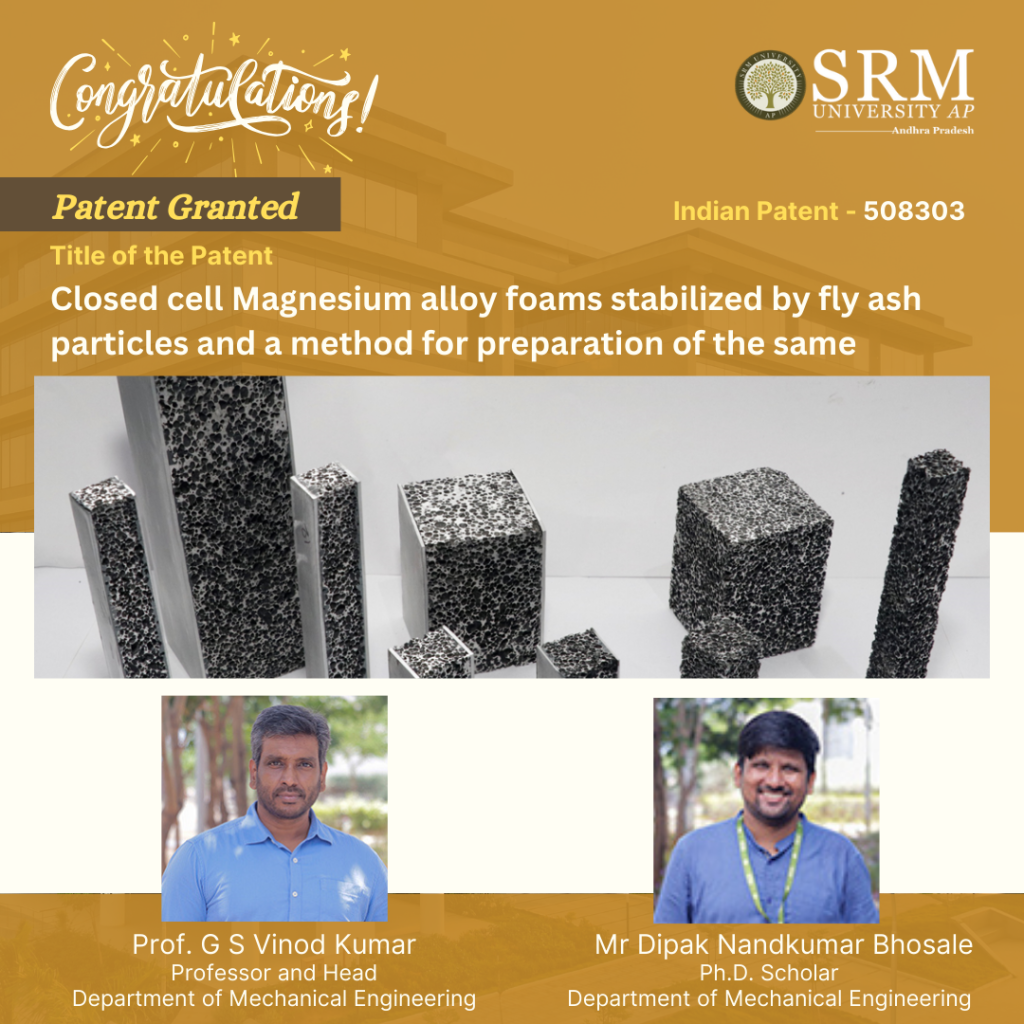
In the era of scientific advancement, Prof. G S Vinod Kumar, HoD and his Research Scholar, Dipak Nandkumar Bhosale, from the Department of Mechanical Engineering at SRM University-AP, shine as a beacon of inspiration. The teacher-student duo were granted a patent for their research titled “Closed Cell Magnesium Alloy Foams Stabilized by Fly Ash Particles and A Method for Preparation for the Same.” This patent stands as a testament to their relentless pursuit and unwavering commitment to science.
Kudos to Prof. G S Vinod Kumar and Mr Dipak Nandkumar Bhosale for their exemplary dedication and foresight. Here’s an abstract of their patent-winning research.
Abstract:
A magnesium metal foam product enhanced with fly ash particles demonstrates versatility across multiple applications, including space, automotive, civil engineering, and marine uses. The stability of this magnesium alloy foam is attributed to the incorporation of fly ash particles, particularly alumina silicate (Al2SiO5) cenospheres. These cenospheres, hollow spheres derived from fly ash, serve as effective stabilisers for the magnesium alloy foam. The preparation involves reinforcing magnesium foamable precursors with fly ash particles, facilitating optimal foaming. The presence of fly ash particles ensures the stability of the liquid foam until solidification, resulting in a foam with a superior pore structure. With a contact angle ranging between 70° to 90°, the particles exhibit prolonged interaction with the liquid metal without agglomeration, dissolution, or reaction. This characteristic contributes to the attainment of desirable qualities essential for diverse applications.
Practical Application:
1. Aerospace: Magnesium foams can be used in lightweight structural components, thermal insulation, and vibration-damping systems in aerospace applications.
2. Automotive: In the automotive industry, magnesium foams find applications in lightweight body panels, crash absorbers, and acoustic insulation.
3. Biomedical: Due to their biocompatibility, magnesium foams are utilised in medical implants, such as bone fixation plates, and as scaffolds for tissue engineering.
4. Energy: These foams can be employed in thermal management systems, heat exchangers, and as structural components in renewable energy systems.
5. Sports and Leisure: Magnesium foams can be used in sports equipment such as helmets, pads, and protective gear due to their lightweight and impact-absorbing properties.
Patent Grant Number: 50830

